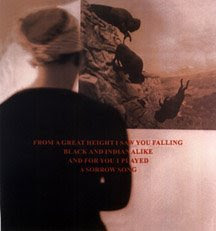 ARTmostfierce
ARTmostfierce is still pretty busy but, still keeping up with the art news.
Christie's is the hot topic this week !
Here is an article by
Carol Vogel of The New York Times highlighting Christie's latest record breaking artwork auction .
Enjoy and don't forget to use sunscreen!
Andy Rain/European Pressphoto Agency
“Le Bassin aux Nymphéas,” the record-breaking Monet.
By CAROL VOGEL
Published: June 25, 2008LONDON — The summer auction season here began at Christie’s on Tuesday night when a standing-room-only crowd of dealers, collectors and art lovers came from all over the world to watch and bid on one of the largest London sales the auction house has held. Early in the evening a record price for a Monet, $80.4 million, was set for one of the rarest of his waterlilies.
A sea of hands shot in the air when that painting, “Le Bassin aux Nymphéas,” which had been expected to sell for $36 million to $47 million, came up on the block. Among at least six would-be buyers, a blond woman in the front row bid tenaciously against several Christie’s representatives on the telephone with clients. When the price hit nearly $70 million, Christopher Burge, Christie’s honorary chairman in the United States and one of the evening’s two auctioneers, leaned over and said to the woman, “Take as long as you like.” The woman, identified as Tania Buckrell Pos of Arts & Management International, a London company, ended up winning the painting on behalf of an unknown client, and the salesroom burst into applause. The previous record for a Monet, $41.4 million for “The Railroad Bridge at Argenteuil,” was set last month at Sotheby’s in New York.
“Le Bassin aux Nymphéas,” from 1919, a large horizontal work measuring more than 3 feet by 6 feet, is from a series of four that Monet signed and dated and that experts consider to be among the most important paintings from his late period. Unlike most of his late works, which remained unfinished at the time of his death in 1926, this series was sold by him. One is in the collection of the Metropolitan Museum of Art; another was cut in two; and a third is in a private collection, having been sold at Christie’s in New York in 1992 for $12.1 million, a stellar price at the time.
The Monet up for auction Tuesday belonged to J. Irwin and Xenia S. Miller, collectors from Columbus, Ind. Mr. Miller, the chairman of the Cummins Engine Company who died in 2004, and Mrs. Miller, who died in February, helped transform Columbus into a showcase for modern architecture by supporting historic buildings and projects.
In addition to the Monet the Millers also owned a Cubist Picasso, another popular work in the auction. “La Carafe (Bouteille et Verre),” painted in the winter of 1911-12, went to a telephone bidder for $7.3 million, above its high $5.9 million estimate.
The Miller collection was the highlight of an otherwise bumpy auction. The evening sale totaled $284 million. Of the 81 works offered, 15 failed to sell. After the collection went on the block, the energy in the salesroom dissipated, with some of the lower-priced works selling below their estimates or not at all. (Final prices include the commission paid to Christie’s: 25 percent on the first $50,000, 20 percent of the next $50,001 to $1 million and 12 percent of the rest. Estimates do not reflect commissions.)
That the Miller collection was sold here rather than in New York is a sign that London is considered a crucial marketplace for the top end of the art market, as more rich Russian collectors put down roots here. (Timing also helped, Christie’s experts said. The Miller children had estate taxes to worry about.)
Playing to Russian collectors, Christie’s sale included a group of works by Russian artists. One, called “The Flowers,” from 1912, by Nathalia Goncharova, was estimated to bring $6.9 million to 8.9 million. It sold for $10.8 million, a price that set two records: for the artist at auction, and for a female artist at auction.
Another big seller on Tuesday was “Dancers at the Bar,” a Degas pastel being sold by an unidentified private collector. The work, from around 1880, is considered important not only for its composition — two young dancers, their white skirts and pink ballet slippers perfectly rendered — but also because of its provenance. It had been owned by Louisine Elder, the wife of H. O. Havemeyer, the American sugar magnate whose bequest forms the bulk of the Met’s Degas collection. The pastel remained in the Havemeyer family for three generations before being sold at Christie’s in New York in 1982 for $1 million.
That price, while seemingly high at the time, looked like a bargain compared with the bidding on Tuesday. Five bidders wanted the work, which ended up selling for $26.5 million, well above its estimate of $7.9 million to $12 million. The winner was Brett Gorvy, a co-head of Christie’s postwar and Impressionist art department, bidding on behalf of a client on the telephone. The speculation in the sales room was that the Christie’s representatives had on the telephone some of Russia’s newly rich collectors.
Several works that had belonged to Simon Sainsbury, the British philanthropist and grocery store magnate who died in 2006, were also for sale Tuesday. Among the best was an early pointillist painting by Signac, “Collioure, Les Balancelles,” a composition of sailboats in the water created in September and October 1887 while he was in the seaside Mediterranean town of Collioure. The painting sold for $5.8 million, higher than its expected estimate of $3.6 million to $4.9 million.















































